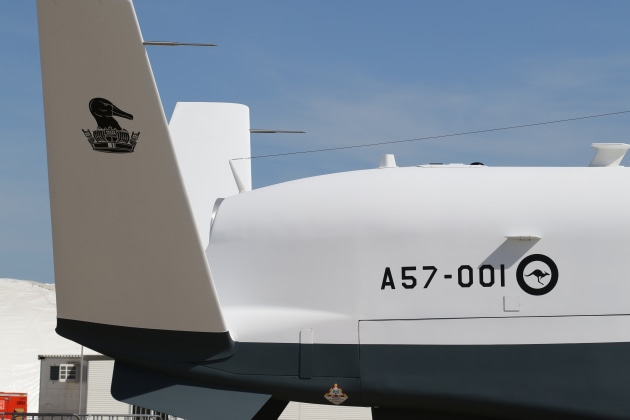The Royal Australian Air Force (RAAF) will reactivate No.9 Squadron to operate the Northrop Grumman Corporation MQ-4C Triton High Altitude Long Range Endurance (HALE) Unmanned Aerial System (UAS).
During this year's Avalon Airshow, the RAAF showed a mock-up of the MQ-4C in full RAAF colours including unit markings.
In March 2014, the Australian Government announced that it has committed to the acquisition of the Triton UAS, subject to the successful completion of the US Navy development programme. Australia ordered six MQ-4C Tritons and all aircraft will be based at RAAF Base Edinburgh (SA). The aircraft will be introduced into service by mid-2023 and all are planned to be delivered and in operation by late 2025.
No.9 Squadron was formed in 1939, operating amphibian aircraft deployed on Royal Australian Navy (RAN) cruisers, before getting disbanded in 1944. It was then re-established in 1962 as a Search And Rescue (SAR) squadron initially but transitioned to providing airlift for the Australian Army. It operated Bell UH-1 Iroquois helicopters and took part in the Vietnam War from 1966 to 1971. The squadron was re-equipped with the Sikorsky S-70A Black Hawk in 1988 before getting disbanded again in 1989, shortly after the Australian government decided in 1986 that the RAAF would transfer its battlefield helicopter capability to the Australian Army.
The re-activated unit will join the RAAF’s two existing maritime Intelligence Surveillance and Reconnaissance (ISR) units, 10 Squadron Strike First and 11 Squadron Shepherd or Destroy, which fly the Lockheed AP-3C(EW) Orion electronic intelligence gathering aircraft respectively the Boeing P-8A Poseidon Maritime Patrol Aircraft. The AP-3Cs will be replaced by the new Gulfstream MC-55A Peregrine aircraft which is being converted to the Intelligence, Surveillance, Reconnaissance and Electronic Warfare (ISREW) role by L3 Harris in the US.
Photo by Nigel Pittaway


